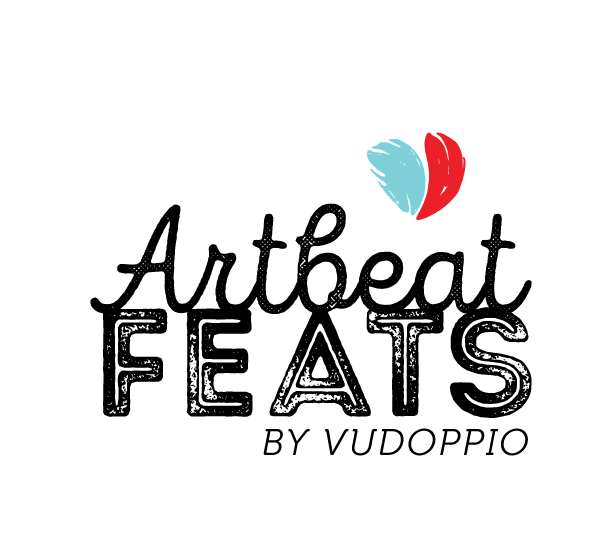Barcelona Day 3: Parc Güell + Old Town + Flamenco
On Day Three, we went to the iconic Parc Güell (pronounced “way” after the patron’s last name) and some last minute intensive window shopping on the way to Tablao Flamenco Cordobes.
Day Three Itinerary
- 9:30am Parc Güell tour
- Old Town: Barri Gothic walk + vintage shopping + Palau de la Musica interior peek
- 5:40pm pre-dinner tapas then Flamenco show at Tablao Flamenco Cordobes
- 4am wake up for 7:15am flight to Rome!
Parc Guell Tour










Parc Güell is the 4th UNESCO World Heritage site we visited (1. Sagrada Familia 2. Casa Mila 3. Casa Battlo). It was originally an unsuccessful housing development that Gaudi designed under the patronage of Count Eusebi Güell and where he eventually moved with his family. It was converted to a park and is still actively used by locals.
We made our way up to Parc Güell on a metro bus with the 3-day Hola Barcelona pass, which took us directly there. Our 9:30am visit was my attempt for us to reach there off peak but already there were multiple lines around the various tour guides offered to visitors. It reminded me of the entrance to the Disneyland theme parks, another wonderland attraction.
Some key points in our one-hour tour:
Gaudi may have been whimsical in his designs but he was first and foremost an architect:
- He employed his knowledge of principles of physics in minimizing reinforcements Closer to the park’s entrance were bridges with leaning columns with rocks were held in place by physics (image top left)
- The plaza’s columned basement beneath was not only a designed as a marketplace but functioned as an aqueduct using Greek style doric columns to collect rainwater from above.
- He considered ergonomics in designing that iconic serpentine bench that overlooks the fairytale lodges. He created this bump to follow the curve of lower back:
The park was more sprawling than I imagined it. I was anxious to see the gingerbread lodges, which served as the final destination of the tour. Knowing that we were on a timeline, we booked it out of there after we “exited through the giftshop” in one of the two lodges.
Soon after, we boarded the bus, our stomachs running on empty, and managed to find a lunch spot that fulfilled two of my target categories: on a budget and healthy.
Honest Greens: Healthy brunch on a budget


Honest Greens is a chef-driven health food restaurant that’s organic, plant-based, and sustainable. You order at the counter and it’s brought to you. Menus are in English, Spanish, and Catalan. They’ve got a great selection of cold pressed juices with names like “Power” and “Detox.” I love places like this!
After brunch, we took a pit stop back to Mihlton for a rest and headed down for our shopping excursion:
Shopping in one day
So starting from Milhton, we headed down Rambla de Catalunya towards Placa de Catalunya, the transition point to Old Town and La Rambla. Stores included Zara’s flagship, Bimba Y Lola, Mango, and vintage shops Flamingo’s and Holala! See Google map pins from Day One.




Old Town
We did a swift walk through Barri Gòtic, a recommended route from DK Eyewitness guidebook on Barcelona and Catalonia. I like the DK guides for their walking routes and detailed infographic on architectural sites. We made it to Palau de la Música Catalana to catch a glimpse of its famous theater interior.
Another UNESCO World Heritage site, it’s one that I feel speaks for itself and doesn’t require an audio tour. What would be ideal would be to watch a flamenco performance there or even their short piano recitals. You can also get a professional photo session, an audio or guided tour, or even dine there at the Palau Restaurant.
Flamenco Performance
I love folk dance. Sardana by the cathedral or the human towers at fairs in Barcelona would do. We opted for Tablao Flamenco Cordobes. According to Rick Steves, flamenco is not necessarily regional to Barcelona, but there are definitely plenty of venues to choose from. We opted for Tablao Flamenco Cordobes because it was a dinner theatre. That intimate space between diner and performer felt like the ideal scale to appreciate the dance, “similar to a Flamenco family party,” as mentioned by the accompanying flyer they distributed at the venue. Flamenco conjures for me performers dancing by tables of onlookers. Call it the Hollywood musical or stereotype, it limits the numbers in the audience and provides a comfortable performer-viewer ratio.
I had read reviews where folks felt that even an hour is a long time to watch flamenco within the scope of a large theatre. Like any classical genre, it has its own unique vocabulary, which to the untrained eye can feel quite repetitive. I remembered feeling this way attending a friend’s Indian Classical Dance performance. While I appreciated everything from the instruments, to the vocals to stage ambiance, costumes, and dance itself, after awhile, it came to feel constrained and repetitive, particularly because I didn’t know the meaning of the various movement and gestures, which I understood was a language unto itself.
Key takeaways:
- Flamenco is an artform of the Romani people. The dancers expressed their emotions through their facial expressions as well as their percussive movements
- Tablao is a family business of three generations
- It’s unscripted and could be about anything from love and joy for ones partner or mother or motherland to pain and outcry from injustice or debilitating labor.
- Singing was passionate at the level of Gypsy Kings
It was a bit hard to applause with the glass of cava and no table nearby to place it on. But performance was excellent and your really got a sense of the communication between musicians and dancers. We got what my daughter termed, “up the nose” seats.
We chose an early show in order to get first dibs on seating but also because we needed to get up the next morning at 4am to catch a 7:30am flight.
Next up:





